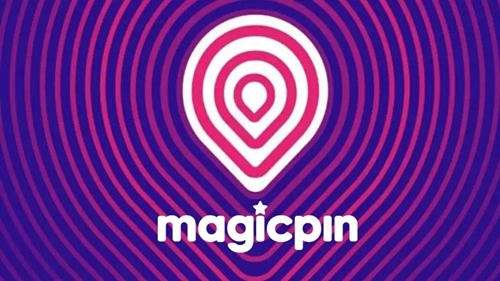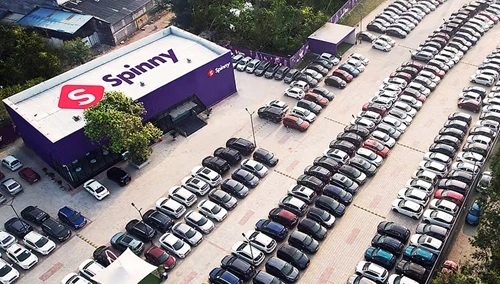Magicpin is an Indian location intelligence platform and app that combines discovery, rewards, and commerce. The business was founded by Anshoo Sharma and Brij Bhushan to help users find local shops like fashion, food, grocery, and more. Users can share reviews, post photos, earn rewards for purchases, and unlock deals and offers. The concept is great as Magicpin can help people while getting promotions and advertisement deals.
Over time, Magicpin shifted its focus from a search tool to being a food delivery and quick commerce platform where logistics services and fashion storefronts helped in staying relevant. The key source of growth comes from partnerships with offline merchants, brands, and expansion in the fashion business. Magicpin is focusing on increasing revenue, reducing losses, and having more user engagement than the competition.
Here, we will learn about how the Magicpin business model works, how they make money, and key insights about the business. Let’s get started –

How is the Magicpin Business Model Structured?
Magicpin’s structure is centred around hyperlocal discovery, commerce, and rewards. It lets users discover nearby shops & deals, share bills/reviews, earn “Magicpin points”, and redeem offers. Magicpin offers four key services to attract customers and merchants on their platform. The primary service is Food delivery and quick commerce which is called MagicNow. The second service is logistics and delivery tech. Third segment is fashion and offline retail discovery. Lastly, there is voucher business and reward which earn Magicpin the most revenue.
| Company/Brand | Magicpin |
| Establishment Year | 2015 |
| Headquarters | Gurugram (Gurgaon), India |
| Founder/Owner | Anshoo Sharma & Brij Bhushan |
| Industry | Discovery, Rewards, food delivery, Local commerce, Fashion, Logistics |
| Net Worth (2025) | ~ ₹ 870 crore |
| Total Revenue 2025 | ~ ₹ 1,000 crore |
How Does Magicpin Make Money?
The key source of revenue for Magicpin is vouchers, deals, cashback, and savings offers. Yes, you heard it right. By offering vouchers and partnering with brands, Magicpin can earn through referral, affiliate, and similar methods. Below are five key strategies by Magicpin for their revenue –
1. Voucher, Deals, Cashback, and Savings Offers
A significant portion of Magicpin’s revenue comes from vouchers and deals as users purchase vouchers or deals from local stores or through online services. Magicpin procures or partners for vouchers, sells them (often bundled with a discount or cashback), and earns a margin between what the user pays and what the merchant is paid (after discount or subsidy). In FY24, voucher procurement costs were very large (~80%+ of costs), indicating this is a central revenue and cost component.
2. Commissions and ONDC Subsidies
Magicpin earns through commissions and fees that it charges to merchants. When deals or vouchers are redeemed by users or when orders are placed for food delivery or other categories, Magicpin collects a commission on those orders. Sometimes, Magicpin does partnership or exclusive deals with brands where it charges a fixed fee instead of a percentage-based commission. Magicpin is also a part of the Open Network for Digital Commerce. Magicpin gets subsidies for being a seller app. There can be incentives as well for ONDC subsidies.
3. Food Delivery and Quick Commerce
Magicpin’s latest addition to their existing services, MagicNow, is a quick-delivery app that promises 15-minute food delivery. This service was started by Magicpin in December 2024. Users can order food quickly from nearby restaurants. MagicNOW contributes to a portion of the total food order volume. With faster delivery, they charge delivery fees, sometimes with premium pricing. This helps increase revenue and engages users more.
4. Logistics and Delivery Tech
MagicFleet is another branch of Magicpin, which offers logistics and delivery network support. MagicFleet handles deliveries for orders like Food, Vouchers, etc, and also offers a last-mile feature. Magicpin charges fees for this service, but they have to manage the expenses as some portion goes to delivery partners, and more.
5. Fashion and Offline Retail Partnerships
Magicpin works with offline stores and fashion brands. It helps brands and stores generate footfall and sales via platform-driven promotions, deals, vouchers, and discovery. For example, in FY25, Magicpin generated ~₹ 1,000 crore GMV in its fashion vertical across ~16,000 stores and over 250 brands.
Financial Performance
In FY24, Magicpin revenue from operations was around ₹870 crore, almost three times what they made in FY23. Adjusted EBITDA margin improved, narrowing to about −9.8% in FY24 from −39.2% in FY23. Cash burn (net loss) reduced by ~30% year-on-year. Loss in FY24 was around ₹ 78 crore, vs larger in the previous year.
What’s new in 2025?
Magicpin continues to incur losses; however, its adjusted EBITDA has shown improvement over last year. Magicpin recently launched and scaled MagicNow, which offers 15-minute food delivery and quick commerce services. Their fashion business saw significant growth in FY25 with ~₹ 1,000 crore GMV (turnover) in fashion, 16,000 offline fashion stores onboarded, 250+ brands live.



